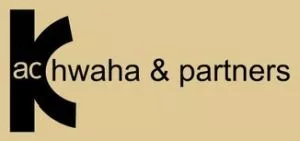It is self-evident that there can be no justice if the judge is biased.
The subject of judicial bias is vast and complex. Though the policy of the law is clear, addressing bias remains a challenge.
This article is in two parts: The first presents the underlying common law principles of judicial bias and their evolution through ages, leading to the current test and the continuing difficulties. The second part focuses on the jurisprudence of arbitrators independence and impartiality.
itrators independence and impartiality. The test of apparent bias for an arbitrator is no different from that applicable to judges or members of judicial tribunals. Arbitratons however are sui generis as a dispute resolution mechanism and as such pose challenges
The arbitration jurisprudence of independence and impartiality is founded on two United Nations documents: the UNCITRAL Rules of 1976 and the Model Law of 1985. Substantial build up has come from within the arbitration community (chiefly in the form of the IBA Guidelines). The arbitral community has crafted a tailor made jurisprudence, the central thrust of which is to require proper disclosure. Disclosures however pose issues of their own. Both over and under disclosure are problematic. The IBA Guidelines, following an innovative approach, have become the gold standard for disclosure and received wide acceptance and judicial recognition. At the same time some shortcomings and criticism have been levelled.
The article presents the foundation of the arbitration jurisprudence; approach taken by the arbitral institutes; the salient features of the English appraoch; how different considerations come into play at different stages of the arbitration and a critical review of the IBA Guidelines. An alternate approach to the IBA Guidelines and the disclosure protocols is also suggested.
The article explores the consquences of non-disclosure and if sanctions should follow non-disclosure. The conflicting views here are explored and it is commented why the dicta in Halliburton (to mulct an arbitrator with costs of a serious but unsucessful challenge) warrants reconsideration.
The article concludes with some recommendations.
"In connection with British justice ... there is a saying, 'it is not enough that justice should be done, it must be seen to have been done'. This really means never mind justice, the main thing is that your decision should look just."
George Mikes1
A. INTRODUCTION:
A dispute resolution needs to be credible and credibility is bedrocked on impartiality. The rule against bias thus constitutes the very soul of the justice delivery system. In arbitrations (essentially a private dispute resolution forum), the rule has received special treatment. Though rooted in general law, the arbitration jurisprudence of bias and impartiality has evolved to occupy a universe of its own.
This article is in two parts. The first focuses largely on the principles of apparent bias evolved under the English common law. The second part explores the international arbitration jurisprudence on the subject.
B. PART I: THE TEST OF JUDICIAL BIAS
Few legal issues have proved to be as elusive as defining what constitutes judicial bias. The policy of the law is fairly straightforward. It has evolved from a fundamental principle of natural justice that no man should be a judge in his own cause (nemo iudex in re sua) and the guiding principle (which has indeed become synonymous with the rule) is that justice should not only be done but seen to be done. The policy is based on preserving the confidence which the general public must have in the judicial system and not let bias distort the law. The principle thus is not only that the judge must not be biased – it is that there must be no impression that he is biased. This is for: 'Justice must be rooted in confidence: and confidence is destroyed when right-minded people go away thinking: "The judge was biased"'2. 2
The law thus does not require actual bias to be established. This is considered to be neither desirable nor practical. The law looks at the perception of the situation and the impression it conveys to right minded persons. The struggle faced by the common law courts for well over a century and a half has been firstly to define the threshold or the degree of 'probability' or 'possibility' in determining whether or not there was judicial bias (a given situation may range between a mere suspicion to near certainty). Secondly, from whose perspective is the situation to be judged? Is it of the reviewing court; the party or a third party (the reasonable man – later defined as the 'fair minded' and 'informed observer').
In cases concerning a pecuniary or proprietary interest on the part of the judge courts apply an 'automatic disqualification' rule. This is on the premise that these types of cases will 'inevitably shake public confidence in the integrity of the administration of justice'3. 3 In other situations the approach has meandered but briefly, the current English position is that the court looks at the fairminded and informed observer's perception of a 'real possibility' of bias.
1. The Automatic Disqualification Rule
This is a more straightforward application of the principle that no man should be a judge in his own cause. The rule came to be applied as far back as 1852 in the celebrated case of Dimes v. Grand Junction Canal.4 Here, Lord Chancellor Cottenham had affirmed a decree in favour of a canal company in which he was a substantial shareholder. The House of Lords set aside the decree observing:
No one can suppose that Lord Cottenham could be, in the remotest degree, influenced by the interest that he had in this concern; but, my Lords, it is of the last importance that the maxim, that no man is to be a judge in his own cause, should be held sacred. And that is not to be confined to a cause in which he is a party, but applies to a cause in which he has an interest.
Footnotes
1 English Humour for Beginners, 8 (Penguin Random House).
2 Lord Denning in Metropolitan Properties Co. (FGC) Ltd. V. Lannon (1969) 1 QB 577 at 599.
3 R v. Gough (1993) A.C. 646 at 661.
4 10 E.R. 301 at 315; (1852) 3 H.L. Cas. 759, at 793.
Click here to continue reading . . .
The content of this article is intended to provide a general guide to the subject matter. Specialist advice should be sought about your specific circumstances.

